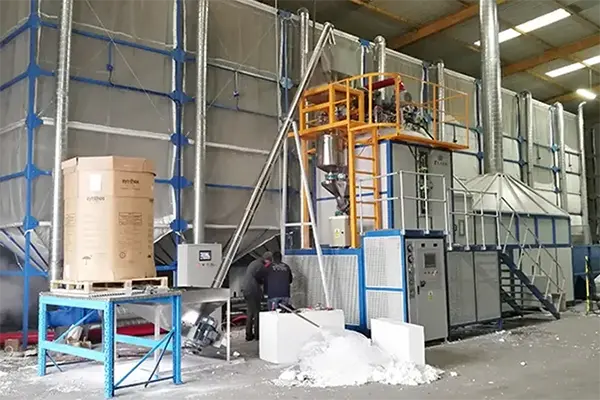Styrofoam, a popular material known for its insulation properties and lightweight nature, is a brand name for expanded polystyrene (EPS). It’s widely used in various applications, from packaging materials to building insulation.
The Styrofoam Manufacturing Process
The process of making Styrofoam involves several key steps:
-
Styrene Monomer Production:
- Styrene monomer, the basic building block of polystyrene, is produced from petroleum-based feedstocks like benzene and ethylene.
- These feedstocks undergo a series of chemical reactions to produce styrene monomer.
-
Polymerization:
- Styrene monomer is polymerized, meaning it’s transformed into long chains of polystyrene molecules.
- This process can be carried out through various methods, including bulk polymerization, suspension polymerization, and emulsion polymerization.
-
Bead Expansion:
- Tiny polystyrene beads are created and placed in a heated chamber.
- A blowing agent, typically a hydrocarbon-like pentane, is injected into the beads.
- The heat and pressure cause the blowing agent to vaporize, expanding the beads significantly.
-
Molding:
- The expanded beads are placed in a mold and heated.
- The heat softens the beads, allowing them to fuse and take the shape of the mold.
- This process is known as thermo-forming.
-
Cooling and Solidification:
- The molded Styrofoam is cooled, causing the beads to solidify and retain their shape.
-
Trimming and Finishing:
- The solidified Styrofoam is trimmed to the desired size and shape.
- Any excess material is removed, and the product is often further processed, such as being cut, shaped, or coated.

Styrofoam Machine
A Styrofoam machine is a specialized equipment that automates various stages of the Styrofoam manufacturing process. These machines are crucial for efficient and large-scale production. Key components of a Styrofoam machine include:
- Bead Expansion Chamber: This chamber heats and expands the polystyrene beads.
- Molding Machine: This machine shapes the expanded beads into desired products.
- Cooling System: This system cools the molded product to solidify it.
- Trimming and Cutting Equipment: This equipment trims and cuts the product to the required size and shape.
Environmental Considerations
While Styrofoam offers many benefits, its environmental impact has raised concerns. The production of Styrofoam involves the use of fossil fuels and the release of greenhouse gases. Additionally, Styrofoam is not biodegradable and can persist in the environment for many years. To address these issues, efforts are being made to develop more sustainable Styrofoam alternatives and improve recycling processes.
In conclusion, the production of Styrofoam involves a complex process that transforms styrene monomer into a versatile and lightweight material. By understanding the manufacturing process and the environmental implications, we can make informed choices about the use of Styrofoam and explore more sustainable alternatives.
Post time: 11-18-2024





